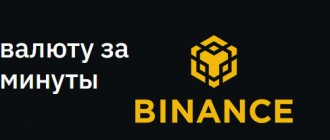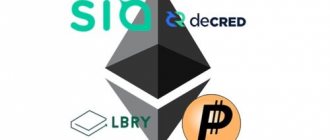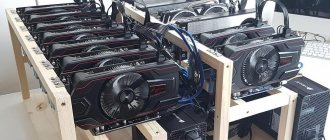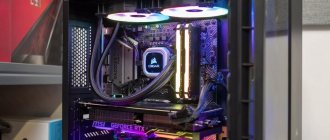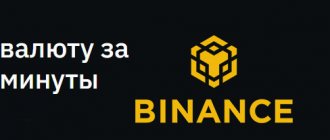Nadezhda Zakharova 09/14/2018
The development of the crypto industry occurs not only in price and quantity.
An increasing number of different algorithms are being developed on which cryptosystems operate.
Some become very popular, and coins generated with their help reach the TOP in terms of value and total capitalization.
Others remain the preserve of network participants and fans of trading exotic assets.
In this review, we will consider the well-known but little used NeoScrypt algorithm.
What is the neoscript algorithm
Its development was carried out under the Feathercoin coin, which became the basis for the creation of a whole family of forks and individual developments exclusively for NeoScrypt.
The reason for the start of research in this direction was the massive connection of ASIC miners for the Scrypt algorithm.
This led to a sudden increase in the complexity of mining and owners of farms on video cards began to experience serious difficulties with payback, unable to withstand competition with microprocessor systems.
A new solution was required to redirect the remaining capacity. This is how the NeoScrypt algorithm was born.
The principle of operation is no different from the progenitor Scrypt. The PoW principle reliably protects networks and cryptocurrencies from intrusion and theft. The system is completely resistant to hardware and it is impossible to use Asic miners of models available on the market. This provided coins running under this algorithm with relatively low difficulties and longer emission periods, and miners connecting farms on video cards to the network with a good opportunity to receive new coins at low complexity as an investment asset.
A feature of the Neoscrypt mining algorithm is the requirement for the size of the reward for the found block for all cryptocurrencies that are created on it. The volume ranges from 60 to 90 crypto coins.
Against the backdrop of a minimal, but still growing, exchange rate on key sites and relatively low complexity, the payback of farms with TOP video cards, with proper work and trading, reaches the mark of 6-9 months.
The complexity of some cryptocurrencies makes it possible to use the computing capabilities of processors, which are often idle when working with other algorithms.
A small, but still faster payback, as well as additional opportunities for those who have access to idle PCs, for example, office ones.
Another feature that today is becoming a serious advantage of networks based on NeoScrypt is the speed of transactions even during periods of high load.
This was achieved through an authentication procedure that every network participant goes through. A special hash is generated for it, not tied to an individual, but allowing the participant to be identified within the ecosystem.
The first time the function takes a long time to complete, but all subsequent transactions occur almost at lightning speed.
In addition to speed, the security of all transfers also increases, since it is impossible to replace destination data or otherwise “get into” the transaction.
go
Bithold Coin (c11)
We will dig on the pool protopool.net
You need to download Alexis78 for it, find the BHD.bat file and insert the following lines into it:
:loop setx GPU_FORCE_64BIT_PTR 0 setx GPU_MAX_HEAP_SIZE 100 setx GPU_USE_SYNC_OBJECTS 1 setx GPU_MAX_ALLOC_PERCENT 100 setx GPU_SINGLE_ALLOC_PERCENT 100
ccminer -a c11 -o stratum+tcp://eu1.protopool.net:3573 -u hK7iqHRKmNRuzJXRjZUHzpdCaaCfTabuoM -i 19 c=BHD goto loop
After editing, run the same file.
Cryptocurrencies powered by NeoScrypt
Despite the low popularity of the algorithm, many cryptocurrencies created on it are traded on key crypto exchanges. Let's look at the main ones.
VIVO
This release is an optimized and improved version of Dash.
Absolute anonymity and speed of transactions are realized using the MasterNode system.
The coin is considered the calling card of the algorithm and is quite actively circulated on trading platforms, although its price is far from its peak.
Phoenixcoin
Despite the promising name and quite a long history, this cryptocurrency has a capitalization of less than $500,000 and is little popular among traders due to its low cost. It is circulated only on the Cryptopia platform, where the range of trading instruments is expanding very quickly and all coins that have not reached critical mass are drowning under the weight of new offers.
Orbitcoin
The idea of this coin is relevant and promising, but the team lacked credibility and quality in presenting their idea to the target audience.
The essence of the project is to bring traditional and Internet businesses into the ecosystem of safe, fast and intermediary-free payments and transfers.
Bright price peaks recently indicate that interest in the supply is manifested not only by miners and speculators. Capitalization exceeds $1.2 million.
TrezarCoin
The project offers high reliability of storage and transfers, as well as high transaction speed.
Cryptocoin is offered as a payment instrument, an alternative to fiat money and the slow TOPs of the crypto world.
Both protocols for protecting crypto networks PoW and PoS are used.
Innova
A good solution to decentralize the coin and give it partial anonymity.
Confirmation of transactions occurs through shared consensus, but the fact of transfer of funds is recorded in the blockchain.
It is possible to make some cryptocurrencies completely anonymous through the DarkSend function.
Such coins circulate only within DarkSend networks and require a little more time to complete transactions.
Analysts and experienced traders agree that the coin has potential, and the price history confirms this, but the active emergence of new solutions is preventing significant growth.
DESIRE
DESIRE is another alternative solution for making P2P payments, without the participation of intermediaries. Provides high speed payments with absolute anonymity.
A separate advantage is the contract mixing function, which makes it impossible to identify the sender and recipient.
The review does not cover all the coins, but only those that attracted attention due to an interesting idea for a wide range of users or price indicators.
Note. The situation with mining is approaching an important stage and the industry as such is facing serious transformations. Unfortunately, or fortunately, the interests of miners are not taken into account when creating new cryptocurrency projects. It is believed that the price reaching certain levels will automatically switch capacity to a specific project. At the same time, supporting actively developing networks with assets whose prices remain low is difficult, since miners sell part of the assets to maintain and develop their capacities, therefore, they work on the most promising cryptocurrencies. The crypto market has come to a classic form of competition where the one who offers benefits to all participants in the process survives.
go
Vsync (Xevan)
We will dig on the altminer.net pool
For Nvidia, download ccminer.
Open the folder with the miner and create a file with the .bat extension and insert the following lines of code there:
setx GPU_FORCE_64BIT_PTR 0 setx GPU_MAX_HEAP_SIZE 100 setx GPU_USE_SYNC_OBJECTS 1 setx GPU_MAX_ALLOC_PERCENT 100 setx GPU_SINGLE_ALLOC_PERCENT 100
ccminer -a xevan -o stratum+tcp://eu1.altminer.net:3739 -u VL8Xzber3MVH49ZJfmpTixLZxssTdM5GqJ -p “c=VSX” -i 19 —cpu-priority=3
pause
Then we run the same file.
Which miners support the NeoScrypt algorithm
The industry of hardware mining of cryptocurrencies in the process of evolution was divided into two camps AMD and NVidia, “red” and “green”.
Despite the fact that both companies produce equipment to solve the same problems, their approach is different.
This also affected the performance of video cards during the mining process.
Different algorithms load and heat them up differently, which is why there are heated debates online about the use of red and green cards when working with certain mining algorithms. Neoscrypt is no exception.
We mentioned that the algorithm was presented to the market quite a long time ago, back in 2015, but there was no particular success.
The main role in the lack of success, as we found out, is played by the small number of cryptocoins profitable for mining and the low volatility of them on trading platforms.
Now let's look at the question of how the algorithm itself influences the desire of miners to redirect their power to it.
Developers of miner programs are constantly adapting software to work with new algorithms.
Neoscrypt is far from new, because it is present as an option in almost all programs, except for narrowly focused ones.
Let's look at the features of working with this algorithm on the most popular and profitable miners for red and green cards.
Important! Mining cryptocurrencies using the Neoscrypt algorithm is accompanied by a high degree of heating of the chip.
Many miners, especially beginners, forget about heating in their pursuit of increasing hashrate.
The result is material losses, since cards that do not have high-performance cooling of their own cannot withstand loads even without overclocking.
Only TOP models operate in this mode, as well as farms where the standard cooling system has been modified or replaced with a more efficient one or a water one.
Claymore miner for NeoScrypt
Support is provided only for cards from AMD on the following series of chips:
- Pitcairn;
- Tahiti;
- Hawal;
- Tonga;
- Figi;
- Ellesmere;
- Baffin;
- Vega.
Mining of this software using the described algorithm is carried out only under Windows x64.
Other bit depths will not be supported in principle. Linux is planned to be included in the near future.
This decision was a breakthrough with mining on Neoscrypt. Before the release of the product from this well-known commercial software developer, Nvidia cards reigned supreme in the algorithm, outperforming the red cards by more than 30% in hashrate. Claymore's NeoScrypt AMD GPU Miner increased the hashrate of AMD chips by 100% for key models. Profitability even for the cheapest cryptocurrencies has reached good levels. It is with this that analysts attribute the drawdowns in the exchange rate value of the main coins. The hashrate indicators for the main models are as follows.
There are also pitfalls, so don’t rush to switch to this miner.
The declared hashrates are achievable by setting the powlim value to +50. This means an increase in farm energy consumption by at least 20 – 30%.
Such a load from several cards at once can burn out the power supply, which, although selected with a reserve, may not be able to withstand it.
Temperature has already been mentioned, but the issue is important and therefore requires additional disclosure.
Before transferring capacity to a new miner, take into account the minimum increase in equipment temperature by 10 - 14 degrees. It makes sense to supplement the rig or rack with fans, and also reconsider the placement, especially in the summer. Any uncertainty or inconsistency of equipment with new temperature and voltage requirements should lead to a decrease in voltage, and therefore a decrease in hashrate.
CCminer for NeoScrypt
This is a kind of green response to the release of the Claymore miner under NS.
The software is configured for mining cryptocurrencies using the NeoScrypt algorithm using Nvidia cards.
It is most recommended for use in the assembly of Alexis, well-known in mining circles.
This miner does not produce any hashrate doublings. There is a performance increase of 15–25% depending on the fine settings of the rig and the program’s bat file. In recent years, cards from Nvidia have begun to create high competition for red ones as mining equipment, which is why their performance is already high. The jump in hashrate after the development of the claymore opened up a new facet of mining, expanding the boundaries of understanding. Everyone who has minimal experience in creating miners began to look for a similar grail for green cards. There are no results as impressive as for AMD yet, but a 20% increase is not small.
The settings are no different, except for selecting the intensity to maximize performance and once again addressing the increased production temperature and a partial increase in voltage consumption.
NSGminer
This program became a pioneer in the issue of increasing hashrate when working with Neoscrypt algorithms.
The main increase concerns older models of video cards, which for more popular cryptocurrencies no longer compete with farms on cards of the latest models.
For example, for cards from AMD 7970 the increase was x4 from 125 to 500mh/s. Yes, in comparison with the TOP modern cards that provide 2Gh/s, this figure is small, however, old farms are most often dismantled or locked in dark closets, as a memory of the turbulent past. And here is the opportunity to put them back into action.
NSGMiner is notable for the fact that it provides tools for easily setting up red and green cards . The possibility of processor mining has also been implemented.
For cards from AMD there is support for multi-bit Windows, for CUDA cores you can work from Linux.
go
MUNCoin (skunk)
We will mine on a BSOD pool.
For Nvidia cards.
You need to download ccminer.
Create a start.bat file and insert the following lines of code into it:
setx GPU_FORCE_64BIT_PTR 0 setx GPU_MAX_HEAP_SIZE 100 setx GPU_USE_SYNC_OBJECTS 1 setx GPU_MAX_ALLOC_PERCENT 100 setx GPU_SINGLE_ALLOC_PERCENT 100 ccminer-x64 -a skunk -o stratum+tcp://pool.bsod.pw:1998 -u MTznsQqpyxh9ykutnVwQFeor1f7Nx7k4ed -pc=MUN —cpu-priority=3 pause
After editing, run the same file.
For AMD cards
Download the prospector mining program.
Next, run the file prospector.exe
A window with errors will appear, close it and find the config.toml file in the same folder.
You need to insert the following lines of code into it:
[general] gpu-coin = "sigt" cpu-coin = "xmr" default-username = "MTznsQqpyxh9ykutnVwQFeor1f7Nx7k4ed" default-password = "c=MUN" [pools.eth] url = "stratum+tcp://pool.bsod .pw:1998"
[pools.sia] url = "stratum+tcp://sia.eu.nicehash.com:3360/"
[pools.sigt] url = "stratum+tcp://pool.bsod.pw:1998" username = "MTznsQqpyxh9ykutnVwQFeor1f7Nx7k4ed" password = "c=MUN"
[pools.xmr] url = "stratum+tcp://cryptonight.eu.nicehash.com:3355/"
[pools.zec] url = "stratum+tcp://equihash.eu.nicehash.com:3357/" [gpus.0-0] enabled = true label = "Bonaire"
[gpus.0-1] enabled = true label = "Baffin"
[cpu] enabled = false label = "CPU"
Now let's run the prospector.exe file again, the mining process should begin.
Errata
Old algorithms that are no longer used frequently will not have the latest optimizations.
Cryptonight and variants are no longer supported, use another miner.
Neoscrypt crashes on Windows, use legacy version.
AMD CPUs older than Piledriver, including Athlon x2 and Phenom II x4, are not supported by cpuminer-opt due to an incompatible implementation of SSE2 on these CPUs. Some algos may crash the miner with an invalid instruction. Users are recommended to use an unoptimized miner such as cpuminer-multi.
cpuminer-opt does not work mining Decred algo at Nicehash and produces only “invalid extranonce2 size” rejects.
Benchmark testing does not work for x11evo.
Feathercoin
cost: $0.220740;
capitalization: $40,328,165;
traded on exchanges: Bittrex, Cryptopia, LiteBit.eu, BX Thailand, CoinExchange, Bittylicious;
Feathercoin was created as an alternative to Litecoin and is very similar in functionality, but the price is of course very different. The main difference is the total number of coins, compared to the original - 4 times higher. Everything else is more like dust in the eyes than real differences.
Supported Algorithms
allium Garlicoin anime Animecoin argon2 Argon2 coin (AR2) argon2d250 argon2d-crds, Credits (CRDS) argon2d500 argon2d-dyn, Dynamic (DYN) argon2d4096 argon2d-uis, Unitus, (UIS) axiom Shabal-256 MemoHash blake Blake-256 (SFR) blake2b Blake2b 256 blake2s Blake-2 S blakecoin blake256r8 bmw BMW 256 bmw512 BMW 512 c11 Chaincoin decred deep Deepcoin (DCN) dmd-gr Diamond-Groestl groestl Groestl coin hex x16r-hex hmq1725 Espers hodl Hodlcoin jha Jackpotcoin kecca k Maxcoin keccakc Creative coin lbry LBC , LBRY Credits luffa Luffa lyra2h Hppcoin lyra2re lyra2 lyra2rev2 lyra2v2 lyra2rev3 lyrav2v3, Vertcoin lyra2z lyra2z330 Lyra2 330 rows, Zoin (ZOI) m7m Magi (XMG) minotaur Ringcoin (RNG) myr-gr Myriad-Groest l neoscrypt NeoScrypt(128, 2, 1) nist5 Nist5 pentablake Pentablake phi1612 phi phi2 Luxcoin (LUX) phi2-lux identical to phi2 pluck Pluck:128 (Supcoin) polytimos Ninja power2b MicroBitcoin (MBC) quark Quark qubit Qubit scrypt scrypt(1024, 1, 1) (default) scrypt:N scrypt(N, 1, 1) sha256d Double SHA-256 sha256q Quad SHA-256, Pyrite (PYE) sha256t Triple SHA-256, Onecoin (OC) sha3d Double keccak256 (BSHA3) shavite3 Shavite3 skein Skein+Sha (Skeincoin) skein2 Double Skein (Woodcoin) skunk Signatum (SIGT) sonoa Sono timetravel Machinecoin (MAC) timetravel10 Bitcore tribus Denarius (DNR) vanilla blake256r8vnl (VCash) veltor (VLT) whirlpool whirlpoolx x11 Dash x11evo Revolvercoin x11gost sib (SibCoin) x12 Galaxie Cash (GCH )x13 X13 x13bcd bcd x13sm3 hsr (Hshare) x14 X14 x15 X15 x16r x16rv2 Ravencoin (RVN) x16rt Gincoin (GIN) x16rt-veil Veil (VEIL) x16s Pigeoncoin (PGN) x17 x21s x22i x25x xevan Bitsend (BSD) yescrypt Globalboost -Y (BSTY ) yescryptr8 BitZeny (ZNY) yescryptr8g Koto (KOTO) yescryptr16 Eli yescryptr32 WAVI yespower Cryply yespowerr16 Yenten (YTN) yespower-b2b generic yespower + blake2b zr5 Ziftr
Many variations of scrypt based algos can be mine by specifying their parameters:
scryptn2: —algo scrypt —param-n 1048576 cpupower: —algo yespower —param-key “CPUpower: The number of CPU working or available for proof-of-work mining” power2b: —algo yespower-b2b —param-n 2048 — param-r 32 —param-key “Now I am become Death, the destroyer of worlds” sugarchain: —algo yespower —param-n 2048 -param-r 32 —param-key “Satoshi Nakamoto 31/Oct/2008 Proof-of -work is essentially one-CPU-one-vote" yespoweriots: -algo yespower -param-n 2048 -param-key "Iots is committed to the development of IOT" yespowerlitb: -algo yespower -param-n 2048 -param-r 32 —param-key “LITBpower: The number of LITB working or available for proof-of-work mini” yespoweric: —algo yespower —param-n 2048 —param-r 32 —param-key “IsotopeC” yespowerurx: —algo yespower —param-n 2048 —param-r 32 —param-key “UraniumX” yespowerltncg: —algo yespower —param-n 2048 —param-r 32 —param-key “LTNCGYES”
